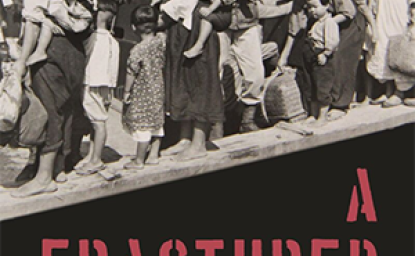203. How Important is the Past? Interpreting Eastern Europe's Transitional Failures and Successes

The most cursory glance at economic growth statistics in post-communist Europe suggests that the past counts a lot. Yet, it isn't quite as simple as a Boeing analyst summarized in a conversation in 1991, when talking about economic growth potential in post-communist Eastern Europe: "Protestant and Catholic good, Orthodox bad, Muslim forget it."
It is more complicated, of course, but this sort of gross and unfair generalization does succinctly capture what has happened as well as, or better than, some of the more sophisticated comparative theory models out there.
An alternate description would state more politically-correct that Central Europe is doing pretty well, especially Poland. By contrast, the Balkans, including Romania, are doing quite poorly, except for Catholic Slovenia. Croatia, now that it is at peace and former President Franjo Tudjman has been replaced by more pro-Western leaders, shows prospects for recovery, but Serbia is hopeless. Albania is a disaster.
In the former Soviet Union, the Baltic countries (Catholic for the most part) are doing best, the Orthodox countries are doing badly or worse, and much of Central Asia is a catastrophe.
Economic statistics vary from year to year, and there are seeming anomalies. The Czech Republic, for example, once a leader in reforms, is now performing relatively poorly. But to go from Prague and Brno to Bucharest is to go from one world to another. All statistics about direct foreign investment, about consumption patterns, or about quality of life show that indeed, Catholic and Protestant central Europe is far better off than the Orthodox and Muslim East and South.
Revisiting the situation in the pre-communist era demonstrates that the gap already existed. It may date back to the Middle Ages, when, in addition to the lack of Ottoman Turkish domination, parts of Central Europe adopted the moldboard plow and the three field system, while the east and south did not.
In some ways, the majority of Romanian peasants in the early twentieth century who were still using wooden scratch plows and no discernible crop rotation system were technologically behind 11th century Burgundian peasants and 15th century Bohemian ones. Of course, in the Balkan mountains, where much of the population lived until the 19th century, a mixed agro-pastoral economy never needed to develop more advanced technologies because population densities were so low. The combination of vast amounts of land per person, an almost completely illiterate peasantry, landowners who were largely absent and had only weak ties to the land, and serfdom that lasted long after it had disappeared further west kept Balkan and Russian agricultural technology centuries behind Central Europe's.
The same differences, not too surprisingly, persisted with industrialization. The Bohemians and Moravians were first, then western Poland, then Budapest, and then, only belatedly, did some parts of Eastern Europe join in.
Does this return us to the crude simplification of the Boeing analyst, or to the only barely more sophisticated gross generalizations of Samuel Huntington's "clash of civilizations?" Unfortunately, it does. It is important, however, to differentiate - the past clearly matters, but it does not necessarily directly determine the future.
A cursory, global outlook demonstrates that relying on what economists and sociologists today like to call "path dependency" - meaning that the past sets a society on a path from which it can only deviate with the greatest of difficulty, so that change occurs within limits prescribed by that past path - is dangerous. By some measures, Ireland is now economically richer, per capita, than Great Britain. To imagine such a thing happening would have been laughable at the start of the 20th century. Italy surpassed Britain some time ago, something that would have been inconceivable in 1900, or for that matter, in 1950. Taiwan and South Korea, which had per capita GNPs at about Ghana's level in the late 1950s are now highly developed, advanced nations.
In the early 1900s, no one who believed in path dependency or Huntingtonian cultural predetermination would have predicted this. The fact is that path dependency certainly plays a part in determining how economic development proceeds, but its effects can be overcome.
Within any society, or for that matter, within any country, different parts of the population and different regions have a varying propensity to do well economically. During the Middle Ages and through the early modern period, immigrants into Eastern and Central Europe from Germany brought new agricultural technologies which rendered some regions more prosperous than others. In Romania, for example, German Transylvanian peasants transformed whole regions around such towns as Brasov and Sibiu. Parts of western Hungary were similarly transformed, as were parts of western Poland and Bohemia. Later, in the 18th century, a new wave of German immigrants turned the Banat, neighboring Voyvodina, and what is now northern Serbia, into oases of rich farmlands and prosperous towns.
When market opportunities developed quickly, as happened when areas such as Romania were first opened up to international trade in the 19th century, populations endowed with basic technological or market skills, were able to develop in big strides, enriching themselves in the process. This explains why globally, certain sets of urban immigrants reaped disproportionate profits when market capitalism first appeared - Chinese in Indonesia and Malaysia, Indians in Burma and east Africa, Armenians, Greeks, Jews, Germans, Lebanese and Syrian Christians in large parts of the Middle East, among others.
In Eastern Europe, the arrival of industry in the 19th century - several generations later in parts of the Balkans and parts of Russia - seemed to increase the disparity between "foreigners," especially Germans and Jews, and majority natives. In time however, the native majority also developed the skills necessary to obtain gains from economic growth.
The duration of the process to develop and transfer such skills however, remains undetermined. In agrarian societies consisting mostly of isolated peasant communities, it took a very long time. German communities in rural Eastern Europe remained distinctly wealthier for centuries. In industrializing societies, this process developed at a much faster rate. Within three generations, the descendants of peasants who migrated to towns and cities flourished.
It is clear that when considering Central Europe - Poland, Hungary, and the Czech Republic - we are looking at places where economic modernization was at least three generations old, and in some cases older than that before World War II. Though certain ethnic and religious minorities were better off than the majorities, enough Poles, Czechs, and Hungarians living in cities and towns knew how to function in, profit from, and run modern economies so that minorities were no longer absolutely essential to continue economic progress.
This was certainly not the case in Romania, where industrialization had really only begun in the 1920s, or perhaps in a few places in the early 1900s. One or two generations did not produce enough Romanians to run and grow a modern economy. Then, with World War II, the country's entrepreneurial minorities - the Jews, then the Germans - were destroyed or displaced. This was certainly also the case in Russia, where there was only one generation of rapid industrialization before Bolshevism destroyed the nascent entrepreneurial class.
The wealthiest parts of post-communist Central Europe were communist for only one and a half generations. As a result, there were sufficient people with market and entrepreneurial skills left over to pass these on, allowing for a fairly rapid revival of the latent Central European economies after 1989. This was particularly true of Poland and Hungary, where small private sectors revived after less than one full generation of suppression.
By contrast, in Romania, and even more in Russia, no such transmission of skills was possible. And by 1989, there were no entrepreneurial minorities left to get the process started again.
So, when we speak of the dead hand of the past, we should be thinking in terms of a few generations, not of millennia or many centuries. This is not the "clash of civilizations" but rather a case of a few missing generations and the destruction of minorities who had once been the spark plugs for economic progress but who are now missing.
There is evidence that the skills necessary to operate in a modern market society are indeed transmissible, and can be spread across ethnic lines within particular societies and regions. One of the most interesting examples is the persistence of certain strong civic and westernizing traditions in some parts of this region throughout the long twilight of totalitarian rule. The influential writing of Robert Putnam illustrates that long standing civic traditions - the ability of societies to organize themselves and create strong, independent associations - correlate highly with general good government as well as economic growth and prosperity.
There are such sub-regions within even the lagging Balkans. In Romania, for example, there is the Banat. Shaped by its German colonists in the 18th and 19th centuries, this region has almost no Germans left and only a small minority of Hungarians. Yet, an analysis of voting patterns there shows that, in 1996, it had an exceptionally liberal, open-minded, and pro-Western electorate. The region, especially its main city of Timisoara, is more open to the outside world, more intellectually adventuresome, and more able to organize itself than most of the old kingdom of Romania. In fact, even during communist times, the Banat was one of the most advanced parts of the country, and its industries and collective farms ran better than elsewhere. Similar pockets exist in parts of Transylvania.
In the 20th century, many an East European state has damaged itself through the persecution or expulsion of its entrepreneurial minorities, or through heavy-handed suppression of the more advanced civic and entrepreneurial traditions of its sub-regions. The great tragedy of communism in Yugoslavia, for example, was not that Tito encouraged ethnic competition, because he did everything to combat it. The tragedy was that socialism, even decentralized socialism, did not give full scope to the entrepreneurial and civic traditions that could have first flourished in the most westernized parts of the country - Slovenia and Croatia.
These observations should make clear that tolerance toward minorities and different regions within a country is more than just "political correctness." Not all minorities are more entrepreneurial or more westernized, but there is no way of picking the "winners" ahead of time. There is also the danger that, once set in motion, intolerance towards minorities and regional differences will engulf everyone. Russia serves as a prime example. What a tragedy that the people of the Caucasus, both Muslims and Christians, who, for various historical reasons, produced some of the most entrepreneurial people in the Soviet Union, have been marginalized and excluded from the mainstream. What a tragedy that the Jews who provided so much important entrepreneurial talent before the Bolshevik Revolution were steered, first disproportionately into the bureaucracy, and then marginalized and persecuted almost as much as in Czarist times, without having the opportunity to engage in entrepreneurial activities. What a tragedy that Russia ceased to take advantage of its German minority.
In summary, cultural traditions and the past do play a role in determining the present and the future, but not in the simple ways suggested by phrases such as the "clash of civilizations." There are much more subtle, local distinctions. In genuinely free societies, a far greater range of cultural predispositions exist than nationalist mythologies suggest, or than broad cultural generalizations recognize.
Let this serve as a warning to post-communist Eastern Europe to remain liberal enough toward its minorities and special regions, allowing them to prosper and lead the way to greater economic well being for all. But let this be a warning, too, to those pessimists who believe that the past is fate, and that the Orthodox and Muslim populations in the post-communist world are hopelessly backward and can only thrive under authoritarian, intolerant, centralized rule. That is an unjustified and dangerous conclusion.
Daniel Chirot spoke at an EES Noon Discussion on February 16, 2000
Author

Global Europe Program
The Global Europe Program is focused on Europe’s capabilities, and how it engages on critical global issues. We investigate European approaches to critical global issues. We examine Europe’s relations with Russia and Eurasia, China and the Indo-Pacific, the Middle East and Africa. Our initiatives include “Ukraine in Europe”—an examination of what it will take to make Ukraine’s European future a reality. But we also examine the role of NATO, the European Union and the OSCE, Europe’s energy security, transatlantic trade disputes, and challenges to democracy. The Global Europe Program’s staff, scholars-in-residence, and Global Fellows participate in seminars, policy study groups, and international conferences to provide analytical recommendations to policy makers and the media. Read more




